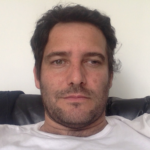
Menu
Symposia
New advances in the analysis of neuroimages: their application to the study of functional and morphometric aspects of the human brain.
Chairs
Since its development in the 70’s and 80’s, the technique of magnetic resonance imaging (MRI) has substantially contributed to the study of the human brain. The implementation of specialized sequences of different modalities (structural, functional, chemical), as well as specific analytical approaches reflect on the high productivity in human neuroscience. The recent advent of Artificial Intelligence together with the implementation of multimodal approaches to examine different tissues simultaneously, and the exponential growth of Data Science, have opened the possibility of exploring more complex aspects of brain structure and function. This process, however, involves challenges at both the computational and statistical levels. In this symposium we will present some of the leading methodologies used to characterize morphological and functional aspects of the human brain in normal subjects and neurological patients. We will discuss the use of promising brain markers/indicators extracted from functional (fMRI), structural (T1), and diffusion (DWI) images to characterize brain function, learning-related plasticity, and for clinical diagnosis. We will also review some critical algorithms of machine learning, and their application in the detection and identification of subtle brain changes in both normal individuals and patients. Finally, we will address some of the challenges associated with this complex approach and the limitations of the technique.
Speakers

Voxel-Based Morphometry - From the lab into the clinic
Ignacio Larrabide
Pladema - CONICET/UNICEN
Read More
Voxel-based morphometry is a computational statistics approach for neuroanatomy that measures differences in local concentrations of brain tissue, through a voxel-wise comparison of multiple brain images. Its single subject version, which relaxes the statistical hypothesis, compares and studies an individual to a group in search for local tissue density differences. Despite this technique having been known for a while, it has not been largely used or extensively validated to be used in a clinical setup. In this talk, we will present the latest results along this line, its potential use and the clinical value of VBM in the clinical practice.

Application of machine learning techniques to the study of the human brain: methodological approaches, advances and challenges
Patricio Andres Donnelly Kehoe
Centro Internacional Franco Argentino de Ciencias de la Información y de Sistemas (CIFASIS-CONICET)
Read More
The use of machine learning has become widespread in various areas related to medicine. Its application in MRI neuroimaging is in a state of permanent advance, and multiple initiatives point to a multimodal, multicenter implementation with a mainly translational focus. In this dissertation, we will discuss the main challenges and approaches to face them. We will analyze a framework to generate massive datasets, including the interaction with image acquisition systems (from a manual to an automated approach), the requirements at the clinical record level to develop translational methods, and harmonization to generate knowledge bases with images from different MRI machines. Then, we will present various techniques for the systematic extraction of robust features in a multimodal approach, and the use of classifiers, deepening into multiple classifier systems (MCSs), Random Forest (RF), and Deep Neural Networks (DNN).

Structural DWI characterization of structural connectivity and volumetry MR analysis in Epilepsy Patients.
Juan Pablo Princich
ENyS - Centro de Estudios en Neurociencias y Sistemas Complejos.
Read More
During this talk i will address methodological issues related to MRI performed in epilepsy patients. Will discuss about DWI structural connectivity estimation and topology findings on a population of patients with epilepsy and malformation of cortical development (FCD). In the second part of the presentation i will show performance abilities of automatic segmentation and atlasing softwares implemented on a dataset of hippocampal sclerosis patients with epilepsy. Additionally will debate about potential MRI features that can be evaluated wit more advanced analysis methods. Finally i will address the importance of formulating biological relevant hypothesis to be investigated with modern analysis techniques.

Applying multimodal neuroimaging to study human brain plasticity.
Valeria Della-Maggiore
IFIBIO, Facultad de Medicina, Universidad de Buenos Aires
In the past decades, magnetic resonance imaging (MRI) has contributed significantly to our understanding of brain mechanisms and the identification of biomarkers of neurological and psychiatric diseases in humans. However, each MRI sequence on its own has several limitations. For example, a functional sequence (BOLD) allows studying dynamic changes in brain activity induced by learning but not the neuroplasticity associated with these changes. The combination of different types of sequences (functional, structural and diffusion), allows to address more complex questions and identify subtle changes in brain morphology and function, such as those associated with learning. In this presentation, we will discuss this multimodal approach in the context of a study aimed at characterising the role of the hippocampus in the early consolidation of motor memories.
